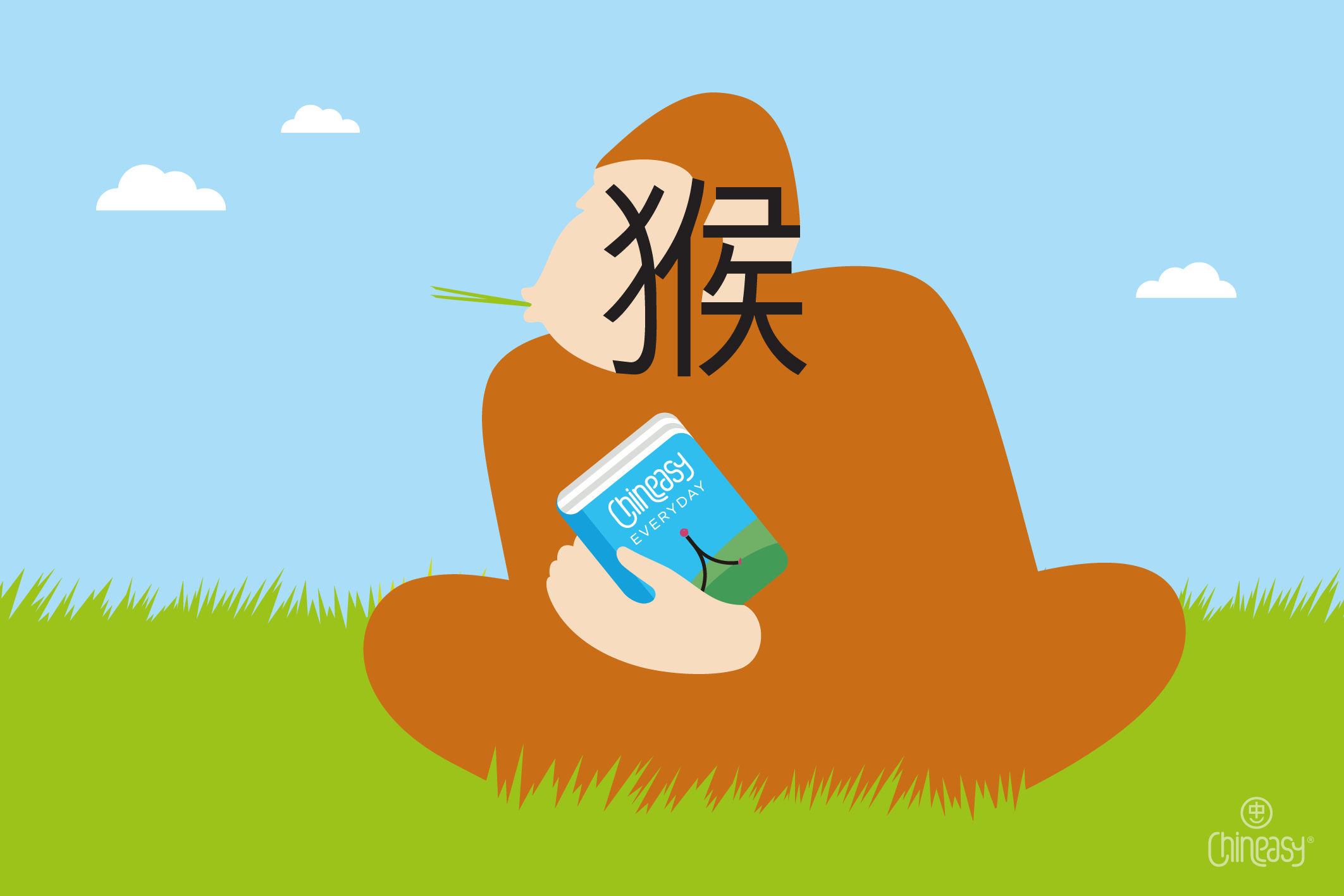As the familiar tunes of “It’s the Most Wonderful Time of the Year” fill the air, it’s time to check off your holiday to-dos!
Have you put up your Christmas tree? Sent out those heartfelt cards? Wrapped your presents and planned your festive dinner? What about curating the ultimate holiday playlist?
But wait, here’s one more delightful item to add to your list: learning five festive Chinese words to bring even more magic to your celebrations! Let’s dive in!
Santa Claus 聖誕老公公/圣诞老公公
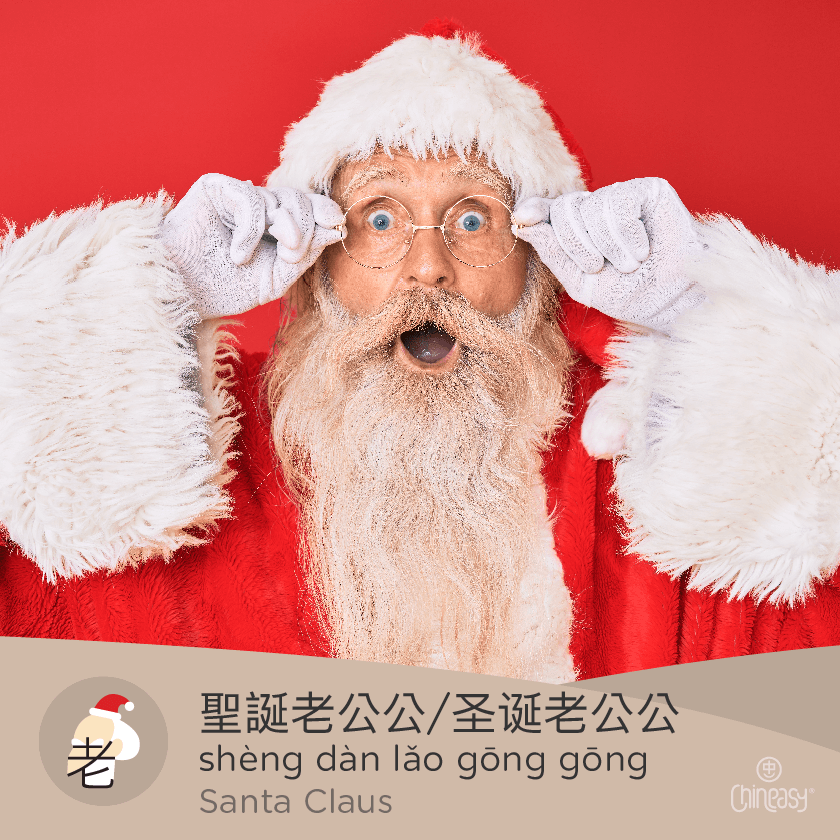
When you hear Santa’s joyful “Ho-ho-ho,” you know it’s time for Christmas cheer! 🤶🏼🎅🏽
In Chinese, Santa Claus is called 聖誕老公公/圣诞老公公 (shèng dàn lǎo gōng gong). Let’s break it down:
-
聖/圣 (sacred; saint) + 誕/诞 (to be born) = Christmas [lit.] the birth of a saint
-
老公公 = grandpa
Fun fact: In some big Chinese cities, postmen dress up as Santa Claus (聖誕老公公/圣诞老公公) to deliver letters and spread holiday cheer. Imagine the surprise of getting your mail from Santa himself!
Christmas tree 聖誕樹/圣诞树
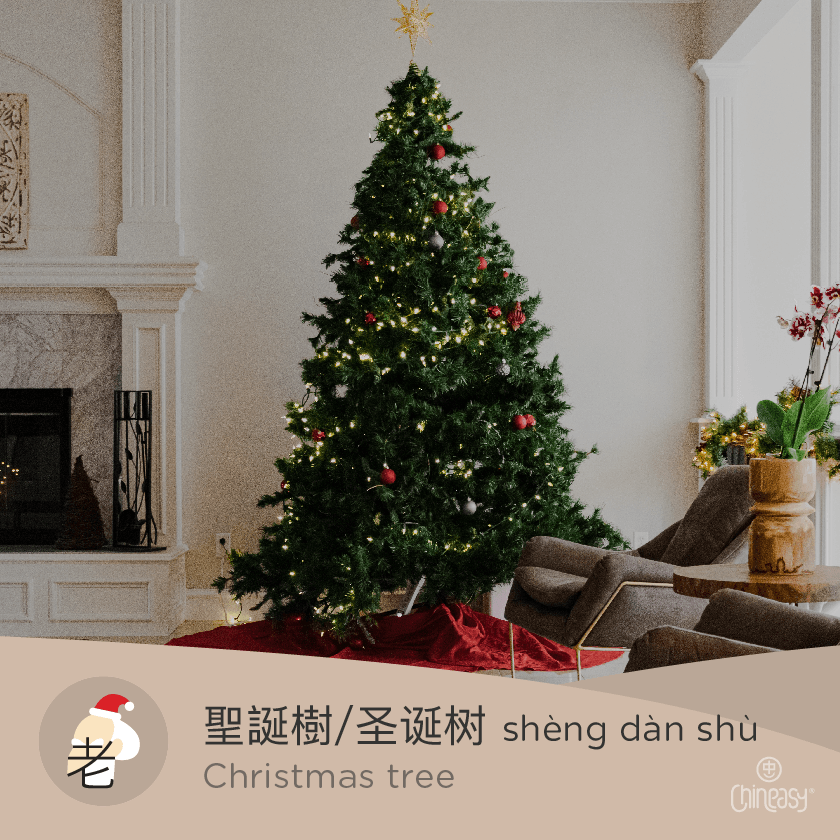
Nothing says Christmas like a beautifully decorated tree glowing with twinkling lights and ornaments.
In Chinese, the Christmas tree is called 聖誕樹/圣诞树 (shèng dàn shù):
- 聖誕/圣诞 = Christmas
-
樹/树 = tree
In many cultures, exchanging gifts under the Christmas tree is a treasured tradition. Families gather around to unwrap presents on Christmas morning, creating magical moments that warm the heart.
Christmas stocking 聖誕襪/圣诞袜
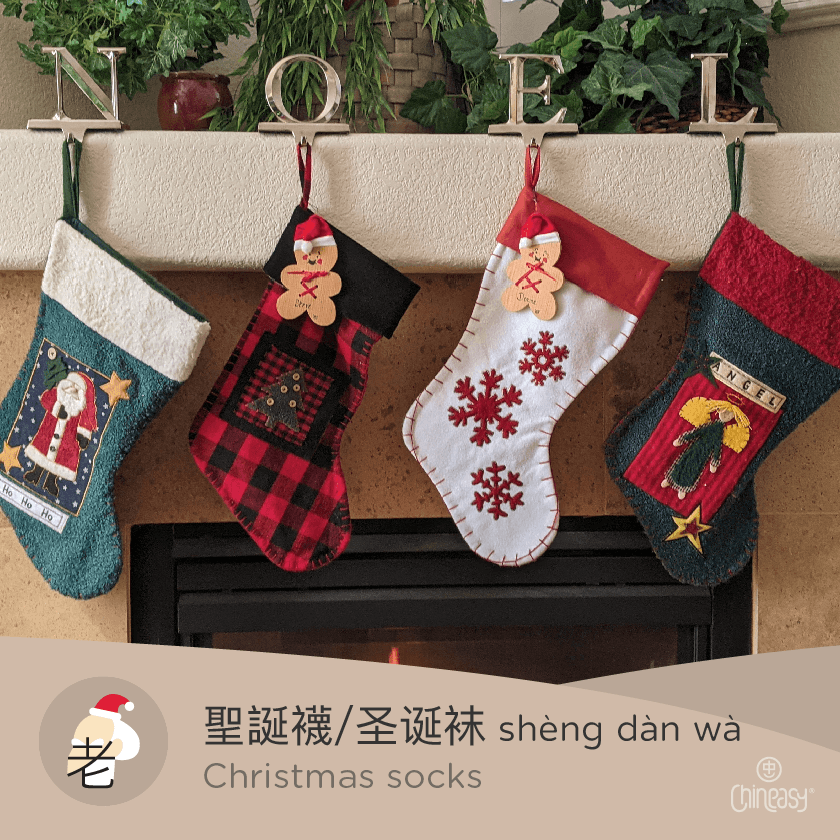
Stockings are a charming part of the holiday season.
In Chinese, they’re called 聖誕襪/圣诞袜 (shèng dàn wà):
- 聖誕/圣诞 = Christmas
-
襪/袜 = sock
Families hang stockings for each member—even pets! On Christmas morning, the joy of discovering tiny treasures hidden inside the stockings adds an extra layer of fun to the festivities.
Reindeer 馴鹿/驯鹿
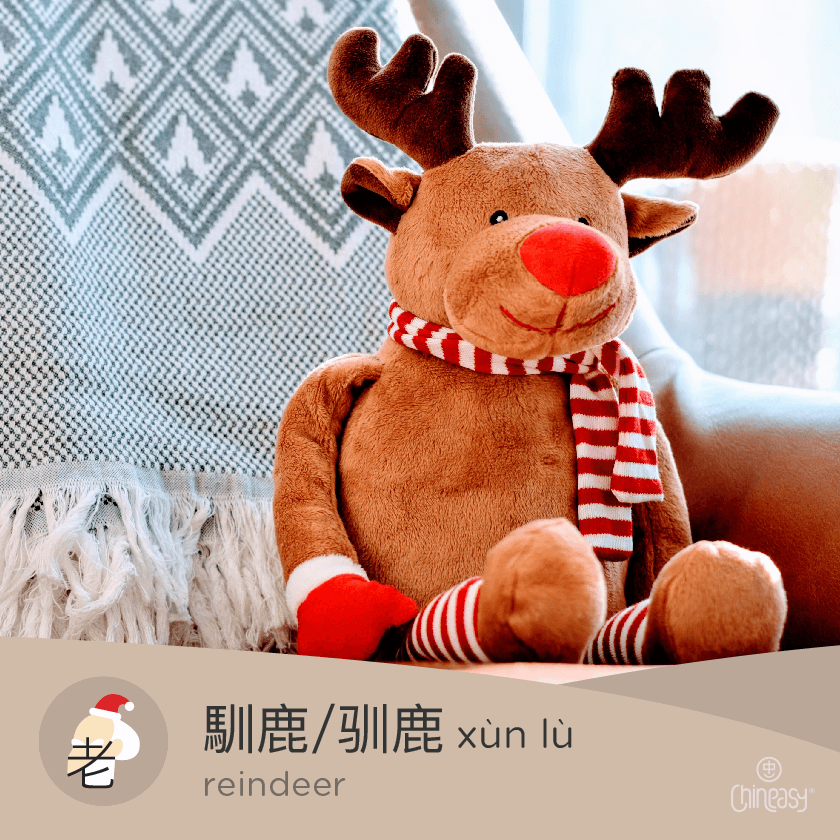
Ever wondered how many reindeer Santa has? In Chinese, reindeer are called 馴鹿/驯鹿 (xùn lù):
-
馴/驯 = to tame
-
鹿 = deer
The Chinese character for deer, 鹿, is fascinating. Its design resembles a deer with antlers and legs:
-
The top part, 广, mirrors antlers.
-
The curve in the middle represents the back and head.
-
The bottom part, 比, resembles legs.
Isn’t it amazing how characters reflect the beauty of nature? Next time you see Santa’s reindeer flying through the sky, think of 馴鹿/驯鹿 leading the way!
Winter 冬
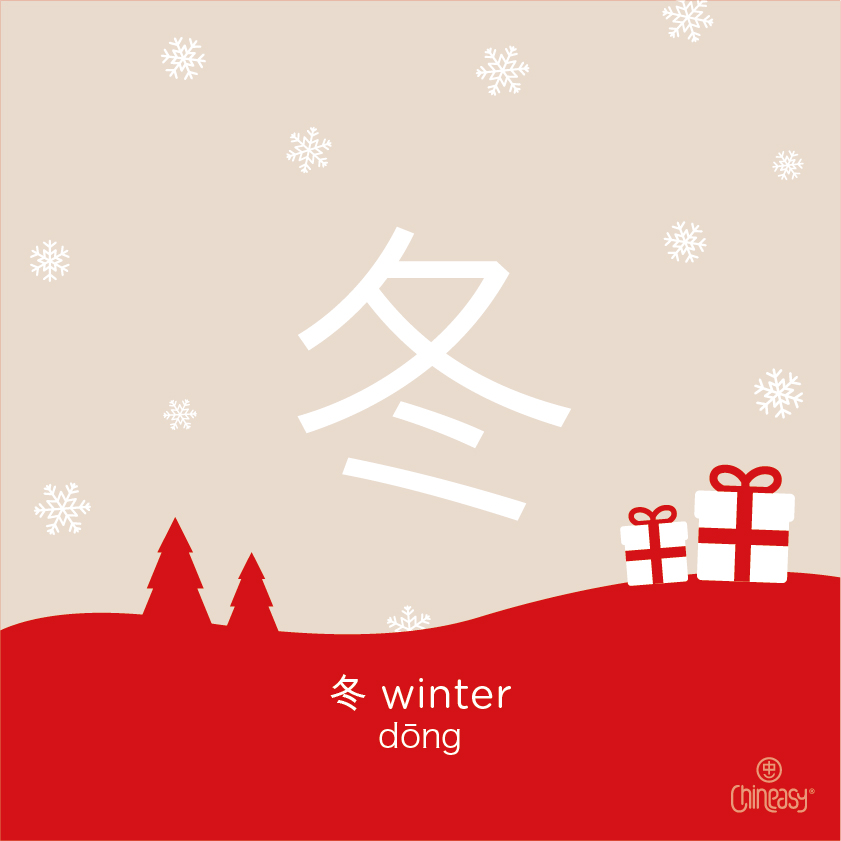
Winter is the season of snow, cosy sweaters, and holiday celebrations. In Chinese, winter is simply 冬 (dōng).
The character 冬 comes from the idea of a knot at the end of a string, symbolizing the end of the year. What a poetic way to capture the essence of winter!
Bonus: Modern Christmas Fun
Christmas today isn’t just about tradition—it’s also about fun, modern trends!
In China, younger generations celebrate by exchanging 蘋果 (píng guǎ), or “apples,” as a symbol of peace.
Why?
Because the word for Christmas Eve, 平安夜 (píng ān yè), sounds similar to “ping guo” (apple) in Chinese.
Giving apples wrapped in festive packaging has become a popular way to wish someone peace and happiness during the holiday season.
Whether it’s Secret Santa gift exchanges, festive selfies with Christmas lights, or sipping on a peppermint latte, these modern twists keep the holiday spirit alive and exciting!
Wrap It Up
This year, try using these five Christmassy Chinese words to add a cultural flair to your celebrations. Whether you’re decorating your 聖誕樹/圣诞树 (Christmas tree), hanging your 聖誕襪/圣诞袜 (Christmas stockings), or marveling at Santa’s 馴鹿/驯鹿 (reindeer), speaking these words can make the season even more special.
So go ahead—embrace the holiday cheer, practice your Chinese, and make this Christmas a season to remember.
Happy holidays and happy learning! 🎄
